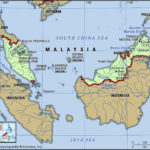Pacific Standard Time (PST) is a crucial time zone, especially if you’re conducting business or staying connected with the West Coast of North America. But Pacific Standard Time Is Where exactly? This article will clarify where PST is observed, its relationship with other time zones, and key details to understand this important time zone.
Decoding Pacific Standard Time (PST)
Pacific Standard Time (PST) is defined as Coordinated Universal Time (UTC) minus eight hours (UTC-8). It’s important to note that PST is specifically observed during standard time, which typically runs from the first Sunday in November to the second Sunday in March. During the rest of the year, most regions in the PST zone switch to Pacific Daylight Time (PDT), which is UTC-7.
Often, you’ll hear PST referred to simply as Pacific Time (PT). While convenient, “Pacific Time” can be ambiguous as it encompasses both PST and PDT. Therefore, it’s useful to understand the distinction, especially when scheduling meetings or events across different seasons. Think of PST as the “winter” Pacific Time, and PDT as the “summer” Pacific Time in regions that observe Daylight Saving Time.
Where is Pacific Standard Time Primarily Located?
PST is the westernmost time zone in the contiguous United States and Canada. Its reach also extends into parts of Mexico. Specifically, Pacific Standard Time is observed in:
United States (during standard time):
- California: The entire state operates on Pacific Time.
- Oregon: Most of Oregon observes Pacific Time, with the exception of the majority of Malheur County, which is in Mountain Time.
- Washington: The entire state is in the Pacific Time Zone.
- Nevada: Nevada mostly observes Pacific Time, but areas like West Wendover and Jackpot follow Mountain Time.
- Idaho: Only the northernmost portion of Idaho, north of the Salmon River, observes Pacific Time. The rest of Idaho is in Mountain Time.
Canada (during standard time):
- British Columbia: The majority of British Columbia uses Pacific Time.
- Yukon: A portion of Yukon observes Pacific Time.
Mexico (during standard time):
- Baja California: This Mexican state aligns with Pacific Time.
It’s important to remember that while these locations observe PST during standard time, they predominantly switch to PDT during Daylight Saving Time.
PST and UTC-8: Beyond Pacific Time
While PST is a prominent time zone at UTC-8, it’s not the only one. Other time zones share the UTC-8 offset but are known by different names, usually due to geographical location. These include:
- UTC-8 Coordinated Universal Time Offset: This is a generic designation for areas 8 hours behind UTC.
- PST – Pitcairn Standard Time: Used by the Pitcairn Islands in the Pacific Ocean.
Understanding that “pacific standard time is where” involves more than just the name is key to accurate timekeeping and communication across different regions globally. When someone mentions PST, they are almost certainly referring to the Pacific Standard Time observed in North America, but it’s always wise to clarify if there’s any potential for ambiguity, especially in international contexts.

